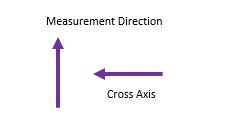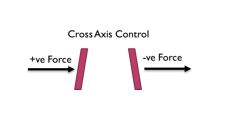How critical is accelerometer cross axis?
The simple answer is very!! The next question is how many engineers and accelerometer users know what it is?...... We will let you answer that yourself!! For those that want to consider it, here’s a few good questions to ask……

Cross Axis is the effect of a vibration input to an accelerometer from a direction perpendicular to the measurement axis, i.e.
What does this mean for the user?
Every 1% of cross axis is a 1% error in your data, so a 5% maximum error for a new accelerometer is a maximum 5% error in your data.
How do accelerometer manufacturers control cross axis?
By pre-polarising the piezoelectric sensing material to operate in the primary measurement axis, however this is not 100% perfect.
What happens to pre-polarisation?
It degrades due to age, temperature and use, so inevitably cross axis will deteriorate and errors will increase.
What can I do to minimise errors?
Always have the cross axis checked during the annual calibration, otherwise errors can accumulate to exceed 35%
How do DJB control Cross Axis?
The Konic Shear design which is unique to DJB, has a natural cross axis cancellation due to the nature of its design, coupled with pre-polarisation it gives long term cross axis stability, unrivalled by any other accelerometer on the market today.
